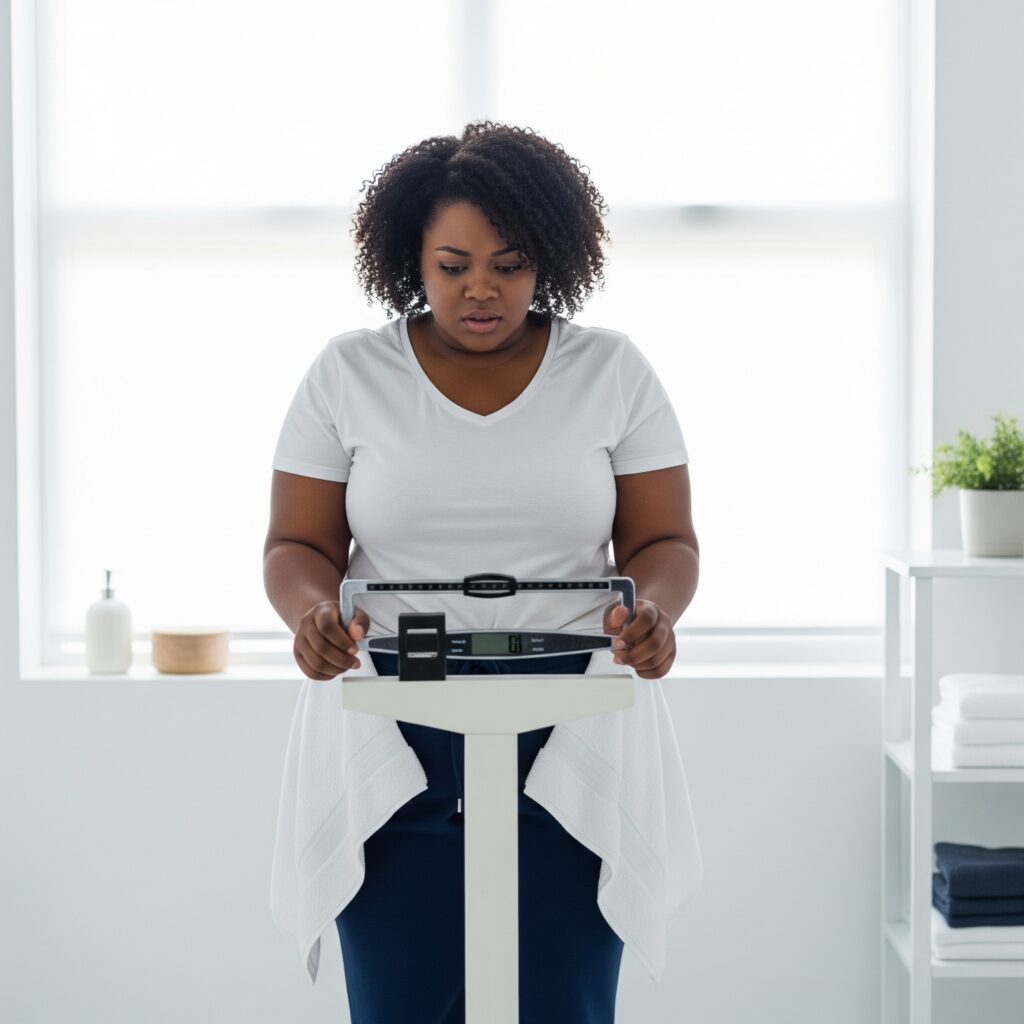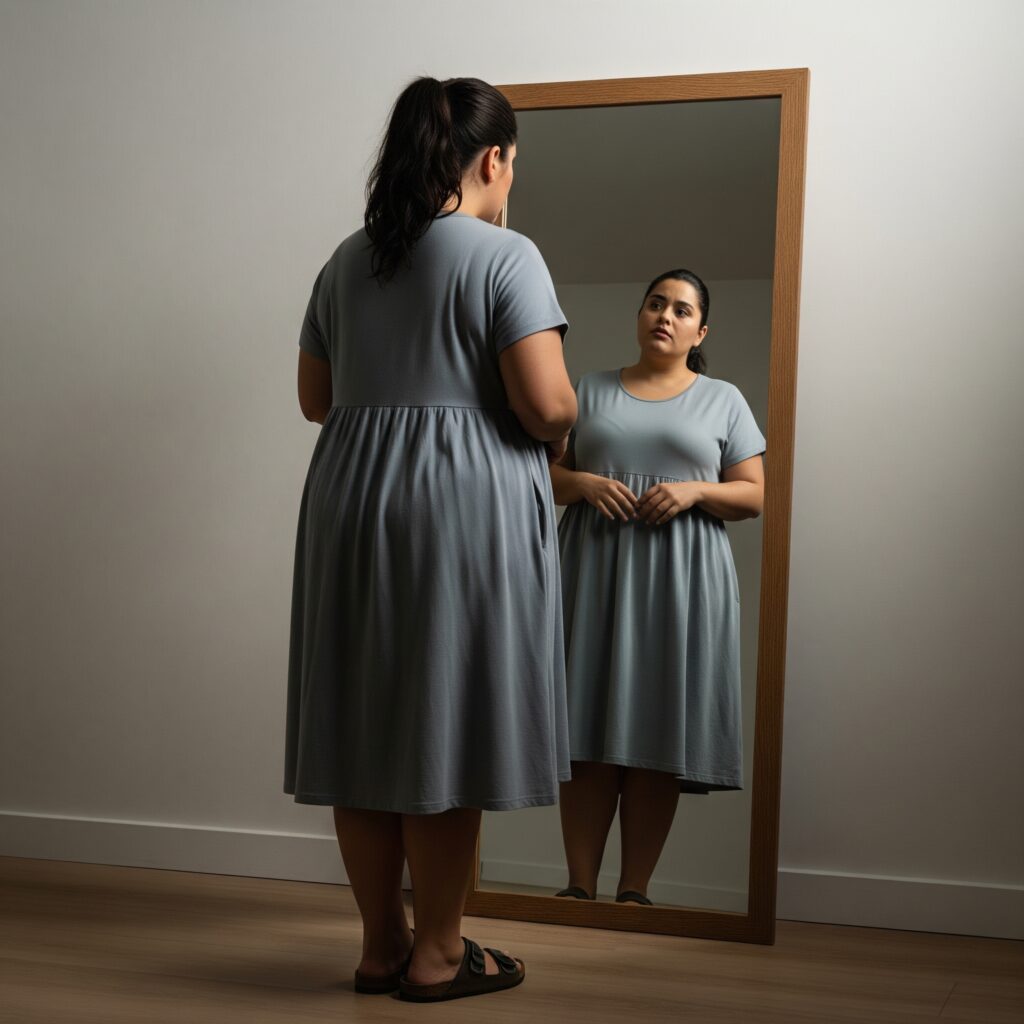
The Ozempic Effect: The New Thin Ideal | TCF
A few years ago—long before the Ozempic effect began reshaping beauty norms—we were finally starting to see bodies like mine on magazine covers beyond just King Magazine and hip-hop music videos. And while those platforms were cultural cornerstones that launched the curvy modeling careers of many Black and Brown women, the visibility I’m talking about came from a deeper shift—one that the Ozempic effect now threatens to undo.
I’m talking about plus size and curvy women being featured in mainstream beauty campaigns and across social feeds—not as “brave,” but as normal. We weren’t just being tolerated; we were being styled, celebrated, and seen.
Then, almost overnight, the tide began to turn. Thin is back—but this time, it isn’t tied to crash diets or juice cleanses. It’s injectable, clinical, and suspiciously quiet. The Ozempic effect has arrived, and with it, a growing shift away from the body-positive visibility so many of us fought for.
Enter: the Ozempic effect, Wegovy, Mounjaro. Once known primarily as diabetes medications, these GLP-1 receptor agonists are now reshaping far more than blood sugar levels—they’re reshaping bodies, ideals, and, quietly, the body positivity movement itself. I noticed the shift amongst the Kardashians, at first, surprisingly. Even without confirmation that they were using the medication for weight loss, my instincts kicked in—especially with the sudden buzz around Kim Kardashian’s desire to slim down.
While there’s nothing wrong with women wanting to reshape their bodies, the boom that launched their careers was lit by the very spotlight placed on their curvy figures. For others, they noticed their favorite plus size and curvy entertainers and influencers suddenly shrinking in size, with no explanation at times. Maybe, they accompany their progress with captions like “feeling like myself again” or “prioritizing my health”, which is always commendable no matter who you are. But other times, the silence or vague explanations would leave followers to think that they wanted nothing more than to just fit in with society’s beauty standards.
What Is the Ozempic Effect—and Why Is Everyone Talking About It?
Ozempic (semaglutide) and its sister medications like Wegovy and Mounjaro were originally developed to treat Type 2 diabetes. But in recent years, they’ve become the go-to weight-loss solution for everyone from Hollywood A-listers to stay-at-home moms and TikTok influencers. According to Trilliant Health, over 9 million GLP-1 prescriptions were written in the U.S. in 2023, a number that continues to rise.
Social media is a major driver. While few people publicly name Ozempic outright, the aesthetics tell the story. Even the language around weight loss has gotten sneakier—“gut health,” “balanced hormones,” “high performance.” But we see it for what it is: the same thin ideal, now masked in wellness language and digital filters.

The Silent Undoing of Body Positivity
The body positivity movement—once radical, messy, and community-driven—is now eerily quiet. What started as a push for diverse body representation in fashion and beauty has been softened into “body neutrality” and “confidence at any size,” which often feels like a polite way of saying, just don’t talk about it. The lack of plus size women across media ads and campaigns is also significantly different, which could also be tied to many corporations pulling back on their DEI efforts. Yes, that affected body diversity, too.
But the Ozempic effect wave has made one thing clear: brands are still uncomfortable with visible fatness. The quiet shrinking of models in campaigns, the drop-off in size-inclusive clothing lines, and the fading presence of fat influencers all speak volumes.
And it’s not just anecdotal. A 2023 KFF poll found that 1 in 4 U.S. adults say they would consider using a prescription drug for weight loss, even if they don’t have a medical need. What does that tell us about the pressure to conform, even in a post-body-positive world? Or how brands will hop on a “trend” just for monetary gain and then return right back to their original audience targets, especially if society decides that inclusivity is no longer cool or relevant.
The Double Standard in “Wellness”

Let’s get something straight: no one is here to shame someone for taking a medication. Bodies are personal, and health is nuanced. But the way we talk about those choices—especially when it involves celebrities or influencers—is where the danger lies.
Thin women who take Ozempic are applauded for “taking control of their health.” Meanwhile, plus size women are still judged for existing, regardless of what choices they make. Plus size and curvy women still deal with negative commentary about their gym routines, their outfits, and so on. If we lose weight, we’re accused of selling out to the societal beauty standard. If we don’t, we’re seen as irresponsible and lazy.
I’ve lost weight, and I’ve gained it back—and at every size, people had something to say.
And let’s not forget that these drugs are expensive and largely inaccessible for the people who may actually need them most. So now we have a “wellness solution” that’s mostly available to celebrities, influencers, and those with elite healthcare access, leaving the rest of us to deal with the fallout.
The Risk: Erasure Disguised as Empowerment
There’s nothing wrong with body autonomy. But there is something deeply unsettling about how quickly the culture flipped the script again—how fast we’re erasing the progress made toward inclusive beauty in the name of “clean” or “disciplined” aesthetics.
We’re seeing fewer plus size models on runways. Size ranges that once extended to 4X are quietly being pulled back. Even the once-bold marketing around inclusivity is now more muted, neutral, and, frankly, slimmer.
I’m not against weight loss and I never will be. I’m against the idea that our bodies were only welcome when they were trending,” I write. “If your campaign can’t find room for a size 18 anymore, it was never about inclusivity—it was about optics. And in the long run, business financial goals in the fashion and beauty industry will eventually face the consequences of exclusive marketing.
Holding the Line on Inclusive Beauty
We are at a pivotal moment. The body positivity movement is being tested—not just by industry standards, but by silence. But let this be a reminder: plus size women built platforms, sparked conversations, and helped brands grow. We are not a phase or a footnote. And we will not be erased by another era of aspirational thinness, in this case, the “Ozempic effect”—no matter how glossy, filtered, or pharmaceutical it appears.
The Ozempic effect is real. But so is our power. And we’re still watching.






